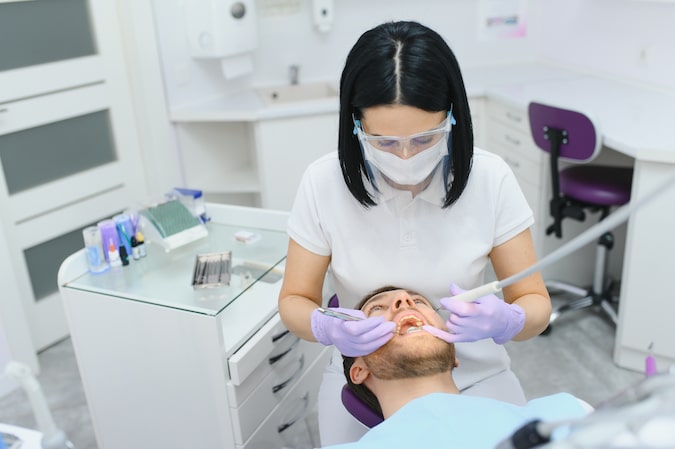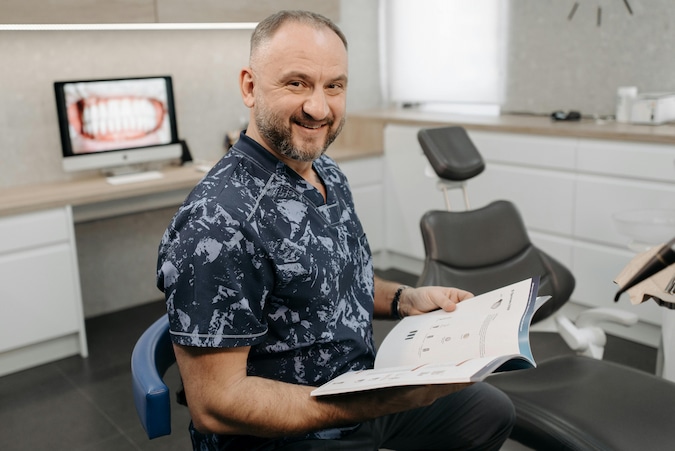
Dental Insurance & Retirement Planning for Self-Employed

Dental insurance and retirement planning are crucial for the self-employed. Explore how to protect your health and secure your financial future with strategic planning.
For self-employed individuals, managing both dental insurance and retirement planning can be challenging. Without employer-sponsored benefits, it’s essential to take a proactive approach to secure your financial health. This guide will provide comprehensive insights into choosing the right dental insurance and building a robust retirement plan.
Key Takeaways:
- Dental insurance is vital for both health and financial security.
- Self-employed individuals have several retirement account options like SEP IRAs and Solo 401(k)s.
- Integrating dental insurance with retirement planning can offer tax benefits.
- Proactively managing these areas can ensure long-term financial stability.
Understanding Dental Insurance for the Self-Employed

Dental insurance is a critical aspect of financial planning, especially for self-employed individuals who don’t have employer-sponsored benefits. Here’s why it matters and how to choose the right plan.
A. Importance of Dental Insurance
Dental insurance isn’t just about maintaining oral health; it’s a financial safety net. For the self-employed, the costs of dental care can add up quickly without coverage. Dental insurance can help mitigate these expenses, offering significant tax benefits by allowing deductions on premiums paid. This not only helps reduce overall costs but also protects against unexpected large expenses from major dental procedures1.
B. Types of Dental Insurance Plans
Self-employed individuals can choose from several types of dental insurance plans:
- Dental Health Maintenance Organization (DHMO): Lower premiums, but limited to in-network providers. Ideal for those who prioritize affordability over flexibility.
- Dental Preferred Provider Organization (DPPO): Higher premiums with the flexibility to choose both in-network and out-of-network providers. Best for those who prefer more control over their dental care choices.
- Dental Indemnity Plans: Most freedom in choosing providers, but usually comes with higher out-of-pocket costs. Suitable for those who need extensive dental work2.
C. Costs and Coverage
When choosing a plan, consider the monthly premiums, deductibles, co-pays, and coinsurance. It’s also important to review coverage limits and waiting periods for procedures. For example, preventive care like cleanings may be covered immediately, but more significant procedures like crowns may have waiting periods. Without insurance, these costs can quickly escalate, making dental insurance a crucial investment for self-employed individuals.
Retirement Planning for the Self-Employed
Planning for retirement is critical for self-employed individuals who lack access to traditional employer-sponsored retirement plans. Here’s how to secure your financial future.
A. Importance of Retirement Planning
Without employer-sponsored retirement plans, self-employed individuals face the challenge of managing their own retirement savings. This makes it vital to start early and contribute consistently to ensure financial security in later years. Proper retirement planning can protect against financial instability and provide a safety net for unexpected events3.
B. Types of Retirement Accounts
Several retirement savings options are designed for the self-employed:
- SEP IRA: Allows for contributions of up to 25% of net earnings, with a maximum of $66,000 in 2023. Contributions are tax-deductible, making it a popular choice for reducing taxable income while saving for retirement.
- Solo 401(k): Offers higher contribution limits by allowing contributions as both employee and employer. You can contribute up to $22,500 annually as an employee, with additional employer contributions bringing the total up to $66,000 (or $73,500 if you’re over 50).
- Traditional and Roth IRAs: Traditional IRAs provide pre-tax contributions, while Roth IRAs use after-tax dollars, offering tax-free withdrawals in retirement. Choosing between them depends on your current and expected future tax situation4.
C. Strategies for Consistent Savings
Consistency is key in retirement planning. Automating contributions can help ensure that you’re consistently saving, even during months when income might be lower. It’s also essential to strike a balance between saving for the future and maintaining enough liquidity to cover short-term expenses. Regularly reviewing and adjusting your savings plan can help you stay on track to meet your retirement goals.
Integrating Dental Insurance and Retirement Planning

Combining dental insurance and retirement planning can offer unique financial benefits. Here’s how to create a synergy between these two crucial aspects of financial health.
A. Financial Synergy
Dental insurance premiums can often be deducted from your taxable income, providing immediate tax relief. Additionally, Health Savings Accounts (HSAs) can be used to cover dental expenses with pre-tax dollars, while also serving as a retirement savings tool. This dual-purpose approach not only protects your health but also enhances your retirement savings5.
B. Case Studies
Consider the example of a freelance writer who invests $3,000 annually in an HSA. This account grows tax-free and can be used for both immediate dental expenses and, after age 65, for any purpose without penalties, similar to a traditional IRA. By combining this with a Solo 401(k), the writer maximizes tax advantages and retirement savings, while also ensuring they can afford necessary dental care6.
Navigating the Marketplace: Finding the Right Plans
Choosing the right dental insurance and retirement plans requires careful evaluation. Here’s how to navigate the options effectively.
A. Evaluating Dental Insurance Providers
When selecting a dental insurance provider, consider factors like coverage options, network size, and customer service. Comparison tools and resources like DentalPlans.com can help you assess different plans based on your specific needs. It’s crucial to choose a plan that offers comprehensive coverage for preventive care, major procedures, and any specific dental needs you might have.
B. Retirement Plan Providers
Similarly, selecting a retirement plan provider involves evaluating fees, investment options, and customer service. Companies like Fidelity, Vanguard, and Charles Schwab offer low-cost plans with extensive service options. Using comparison tools can help you find a provider that aligns with your financial goals and retirement plans7.
Tax Considerations and Legal Implications
Understanding the tax implications of dental insurance and retirement contributions can help you maximize your savings.
A. Tax Deductions for Dental Insurance
As a self-employed individual, you can deduct 100% of your dental insurance premiums from your taxable income, provided you meet specific eligibility requirements. This deduction can significantly lower your overall tax burden, making dental insurance an even more valuable investment8.
B. Retirement Contributions and Tax Benefits
Retirement contributions to accounts like SEP IRAs and Solo 401(k)s offer tax deferral benefits, meaning you won’t pay taxes on these funds until you withdraw them in retirement. This allows your investments to grow tax-free, maximizing the potential for compound growth and significantly boosting your retirement savings over time9.
Final Thoughts
Securing your financial future as a self-employed individual requires careful planning for both dental health and retirement. By choosing the right dental insurance and consistently contributing to retirement accounts, you can protect your health and ensure financial stability. Start today to build a strong foundation for your future, balancing immediate needs with long-term goals to achieve lasting financial security.
Frequently Asked Questions
What are the key differences between a SEP IRA and a Solo 401(k)?
A SEP IRA allows for contributions up to 25% of your net earnings, making it a good option for high earners. A Solo 401(k) offers both employee and employer contributions, potentially allowing for higher overall contributions, especially if you have a high income.
Can I deduct my dental insurance premiums if I am self-employed?
Yes, self-employed individuals can deduct 100% of their dental insurance premiums from their taxable income, provided they meet certain eligibility requirements. This deduction can help reduce your overall tax liability.
How do HSAs work with dental insurance?
HSAs allow you to pay for qualified dental expenses with pre-tax dollars, reducing your taxable income. Additionally, funds in an HSA roll over year to year, and can be used for any purpose after age 65, similar to a traditional IRA.
Sources
- Fidelity Investments. “Health Insurance for Self-Employed Individuals.” Retrieved from Fidelity
- Mutual of Omaha. “Dental Insurance for Self-Employed Professionals.” Retrieved from Mutual of Omaha
- Fidelity Viewpoints. “Retirement Plans for Self-Employed.” Retrieved from Fidelity




